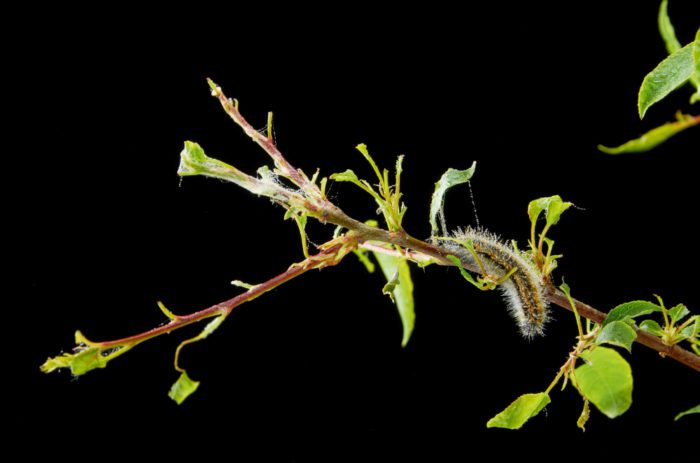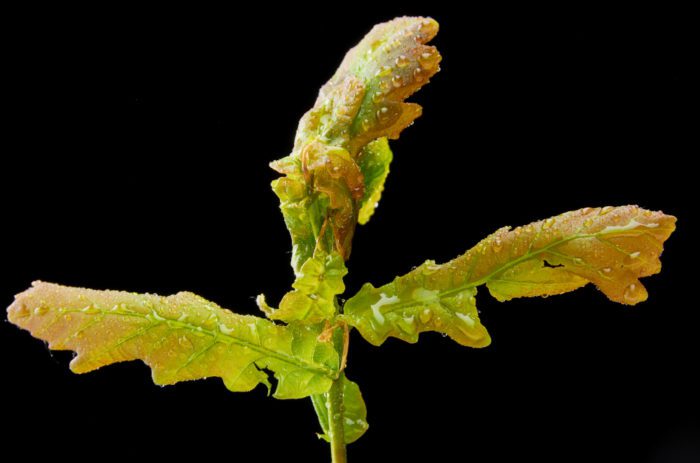Spider mites are arachnids that are related to spiders, ticks, and scorpions and are not genuine insects.
In North America, many species of the spider mite (family: Tetranychidae) attack both indoor and outdoor plants. They can be very damaging in greenhouses.
These tiny sucking parasites may wreak havoc on both indoor and outdoor gardens in a matter of days. But there’s no need to worry because, in this article, we’ll teach you how you can get rid of spider mites once and for all!
Important Note: If you're tired of pests and want a reliable solution, then you should definitely consider seeking help from a professional pest control company. DIY solutions can be effective, but if you're dealing with a significant pest infestation, you don't want to rely solely on DIY methods. Pest control companies typically don't charge huge fees. You can fill out this form to receive free quotes from the top local pest control companies, and compare the quotes and see for yourself. Then, finally, your pest problems will be eliminated for good.
Features of Spider Mites

- Adults are reddish-brown or pale in color, oval-shaped, and very little (about the size of the period at the end of this sentence). They are about 1/50 inch long. Immature stages are similar to adults, however, they are smaller.
- Mites feed by piercing leaf tissue and sucking off plant juices. They dwell in colonies, mostly on the undersides of leaves. Feeding markings appear on the leaves as light spots. The leaves will turn yellow as the feeding continues, and they may dry up and fall off.
- Spider mites thrive in hot, dry environments, particularly where their natural enemies have been eradicated by chemical use.
- Plant-feeding mites, which make up the great majority, are preyed upon by a variety of North American species. They’re also highly prolific, which is why big infestations can go undiscovered for a long time before plants start to show symptoms of harm.
- Fine webbing is frequently found in large populations. Strawberries, melons, beans, tomatoes, eggplant, decorative flowers, trees, and most houseplants are examples of host plants.
Life Cycle of Spider Mites
The eggs of most mite species overwinter on the leaves and bark of their host plants. As the weather warms in early spring, tiny six-legged larvae hatch and feed for a few days before finding refuge and molting into the first nymphal stage. Nymphs have eight legs and go through two more molts before they reach adulthood.
Females can generate as many as 300 eggs in a couple of weeks after mating. The rapid development of these pests is aided by hot, dry conditions.
In such circumstances, the transition from egg to adult could take as short as 5 days. Each year, numerous generations overlap.
Spider mites are known to be windsurfers. They disperse over large areas, riding the breezes on their webbing. That’s why infested plants must be carefully contained and disposed of.
Damage Caused by Them

Spider mites, which are nearly invisible, find their way into our gardens unnoticed. Each one survives by sucking material from plant cells, no matter how few there are. Large infestations leave visible signs of their presence.
Spider mites have piercing-sucking mouthparts that they utilize to collect fluids from leaf tissues while feeding on plant sap. This results in a stippled pattern of tiny white or yellow spots on leaves. It’s possible that they’ll change color, curl, and fall off. The activity of the mites can be seen in the tight webs that form under leaves and along stems.
Spider mite damage becomes more obvious as their population grows. Plants grow progressively fragile and unattractive as their leaves turn yellow and fall off.
Leaves and flowers on bushes like azaleas can become distorted. Complete defoliation can occur in severe circumstances, resulting in the plant’s death. Harvests of fruit crops can be severely hampered.
According to the Integrated Pest Management webpage of the University of California Agricultural and Natural Resources division, mites cause the following damage:
- Loss of leaves on annual vegetable crops like squash, melons, and watermelons can have a big impact on productivity and cause sunburn.
- Spider mites can cause direct damage to crops such as sugar peas and beans, where pods are attacked.
- Mites are largely a cosmetic concern on ornamentals, but they can damage annual plants if populations reach too high. Spider mites are also a major pest of roses growing in the field.
How to Get Rid of Spider Mites?

To avoid an all-out infestation, which is more difficult to eradicate, it’s critical to spot spider mites on plants early on. People, pets, and plants are all safer when using organic ways.
If you suspect that any of your plants have been harmed, follow these procedures. (For further information on how to recognize spider mites and the damage they inflict, see the section below.)
Create a gentle water spray with a nozzle linked to a garden hose to dislodge webbing and as many insects as possible. Make sure to get the leaves’ undersides. This also removes dust from the leaves, which mites like to hide in.
Allow plants to dry completely before applying an organic insecticidal soap. Spray early in the morning or late at night, and avoid using when the temperature is above 90 degrees F. To disrupt the egg hatching cycle, reapply every 7-10 days or as directed on the package.
You may produce your own insecticidal soap from scratch. Mix 1 tablespoon of mild liquid soap, such as Castile or Ivory, with 1 quart of water. Use a spray bottle to apply. Garlic, pepper (capsaicin), peppermint, and rosemary are among other natural medicines.
Neem oil is a natural extract of the neem tree that acts as a general insect repellant and suffocates spider mites when applied. This is a longer-lasting solution that is frequently used following an insecticidal soap application. Use only as instructed, and keep pets and children out of reach.
Beneficial insects that eat spider mites can help you get rid of them naturally. Ladybugs, predatory mites, lacewings, and spider mite killers are among them. People, pets, and plants are not harmed by these insects. If you can get the good bugs as eggs, this technique is the most effective (adults will generally just fly away).
If an infestation gets serious, remove the worst-affected leaves, seal them in a plastic bag, and throw them away. Do not compost them, as this will spread the problem. An entire plant may need to be removed in extreme circumstances.
Chemical pesticides can upset the ecological equilibrium, so avoid them. Other predatory pests may be able to move in as a result, causing secondary issues.
Control Techniques
It’s critical to find spider mites early on before any damage is done.
Option 1: Syringing
Because rainy weather appears to drive spider mites away, syringing with a powerful spray of water from a hose can achieve the same result.
On most ornamental plants in the landscape, regular syringing can keep spider mites under control. This method also aids in the conservation of natural predators.
Option 2: Inspection and Quarantine
Infested bedding and house plants are common sources of the two-spotted spider mite. When buying new plants, look for any signs of mite activity on the lower leaf surface. New home plants should be kept separate from other plants until mites have been eliminated.
Option 3: Predators as Biological Control
Spider mites are eaten by a variety of insects, including lacewings and lady beetles. You can buy predatory mites (typically Phytoseiulus spp., Amblyseius spp., or Metaseiulus spp.) and release them on afflicted plants.
Always check the listings to see which species are suited. Some predators prefer certain hosts, and each predator performs better in different weather conditions. If predators are used, insecticides that kill them should be avoided.
Option 4: Soft Pesticides
It is a type of chemical control. Insecticidal/miticidal oils and soaps can be used to control most spider mites. Horticultural oil and dormant oil are both suitable for application.
During the summer, horticultural oils can be used on perennial and woody ornamentals, but flowers should not be sprayed because they can be harmed. Dormant oils are similar to horticultural oils, except they’re used in the fall and spring to eliminate mite eggs and dormant adults.
Insecticidal/miticidal soaps are beneficial during the summer. Remember that mites are extremely little, and soaps and oils only work when they come into contact with them. As a result, successful management necessitates full coverage of the plant’s upper and lower leaf surfaces.
Option 5- Miticides
Regular pesticides seldom kill spider mites, so make sure to look for the term “miticide” on the pesticide label. Pesticides labeled “for mite suppression” are frequently ineffective miticides that require multiple treatments to be effective.
Because no true miticides are currently available over-the-counter (OTC), most home gardeners will have to rely on insecticidal/miticidal soaps and/or oils. Miticides that aren’t labeled “Restricted Use Only” can be purchased by a homeowner, but only from professional suppliers and websites, and in professional amounts.
Spider Mites – Prevention
Check Before You Buy
Before buying, inspect indoor and outdoor plants to make sure they aren’t contaminated.
Maintain the Health of Your Plants
Ensure that your plants are properly hydrated and nourished. Healthy plants are better able to endure pests and illnesses. On the other hand, plants that are weaker or stressed are more susceptible to issues.
Maintain a Clean Environment
Remove weeds and trash from areas of the garden where pests can hide.
Increase Moisture Levels
Because spider mites flourish in dry environments, keep air humidity levels in plants higher.
Use Sterile Potting Soil
To avoid any soil-borne pests, use high-quality, sterile potting soil.
Plants susceptible to Spider Mites

Spider mites can be found on most plants, including trees, shrubs, perennials, and annuals. Spider mites can attack any plant in the correct conditions, but some are more vulnerable than others. These are some of them:
- Arborvitaes
- Azaleas
- Camellias
- Roses
- Impatiens
- Salvia
- Cucumbers
- Beans
- Tomatoes
- Blueberries
- Strawberries
- Houseplants and hydroponic installations are also at risk.
Preventive Measures
- To avoid the spread of spider mites, quarantine new houseplants for 30-40 days.
- Dry environments are ideal for spider mites, so keep it humid. Increase the humidity in the space, especially during the winter when the air in the house is dry.
- Use a room humidifier or spray plants with a spray bottle regularly to keep them moist. Plants can also be grown in trays with pebbles and water. Allow no standing water to accumulate at the bottom of the pot.
- Wipe leaves with a moist cloth regularly to remove bugs and keep them away.
- To destroy visible bugs, spray afflicted plants with insecticidal soap or use a cotton swab dipped in diluted 70% rubbing alcohol.
- When applying neem oil, be careful not to get the oil on your clothes, furniture, or other household things.
Conclusion
Remember that chemical controls will kill all insects, not only spider mites if you use them. In order to kill spider mites, the chemicals must come into contact with them.
For the chemicals to be effective, you must ensure that the plant is completely covered in them. We hope we were able to help you in getting rid of spider mites.

